Trees Birds Mammals Fish Amphibians Reptiles
Wild Algarve
Bookshop
Ophrys sphegodes - Early Spider-orchid
Phylum: Magnoliophyta - Class: Liliopsida - Order: Orchidales - Family: Orchidaceae
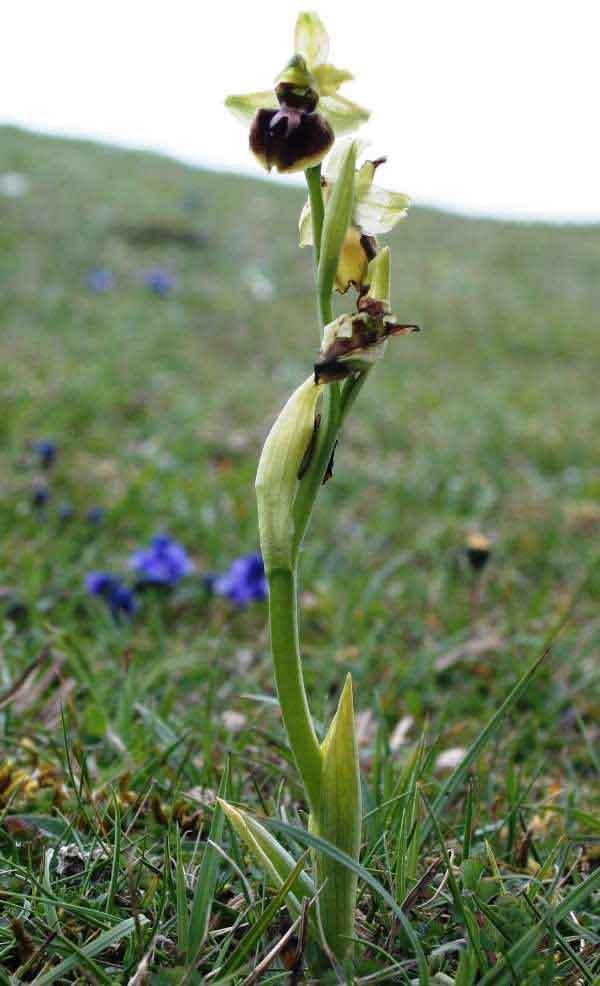
Above: Ophrys sphegodes on the Dorset coastal cliffs
This orchid is the earliest to appear in the UK despite being at the most northerly reach of its territory. Primarily a Mediterranean species, only time and climate change will tell if it continues to survive and extend its presence there. So variable is the appearance (morphology) of this orchid that at least 12 subspecies (pollinated by different insects) are recognised throughout its territory.
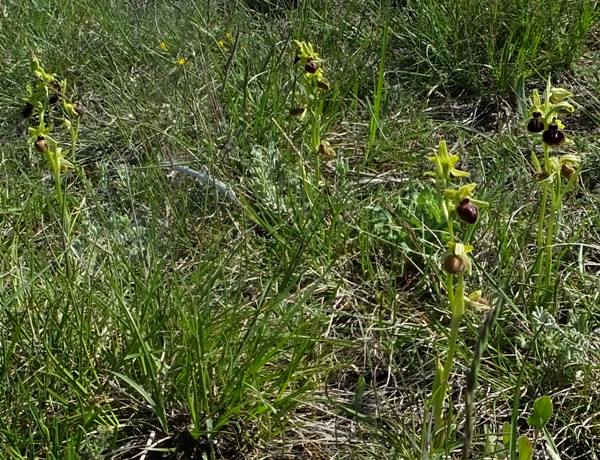
Description
The plant is slender and grows to around 20cm in the UK but can be much taller in other parts of its range - up to 70cm. Each inflorescence carries between 2 - 18 flowers. The sepals and petals are greenish-yellow sometimes marked with reddish-brown.The lip is dark reddish-brown and velvety in appearance. In some specimens there is a narrow border of green-to-yellow around the margin of the lip. The speculum is H-shaped and is a main distinguishing feature of this orchid, although there are one or two subspecies where the mirror is sometimes absent - Ophrys gortynia, for instance.
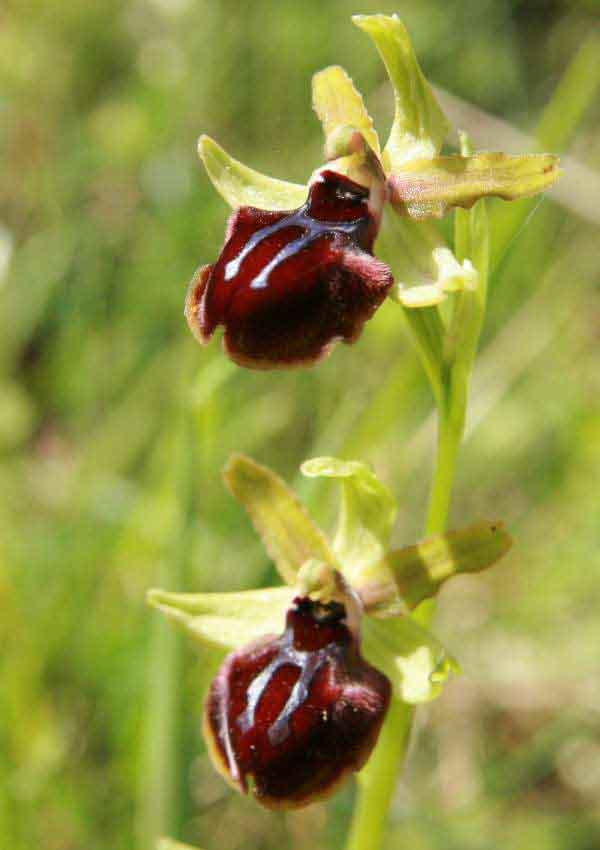
Early Spider-orchid on the Gargano Peninsula in Italy
Distribution
From southern England across central and southern Europe as far south as the Mediterranean and east to the Aegean.
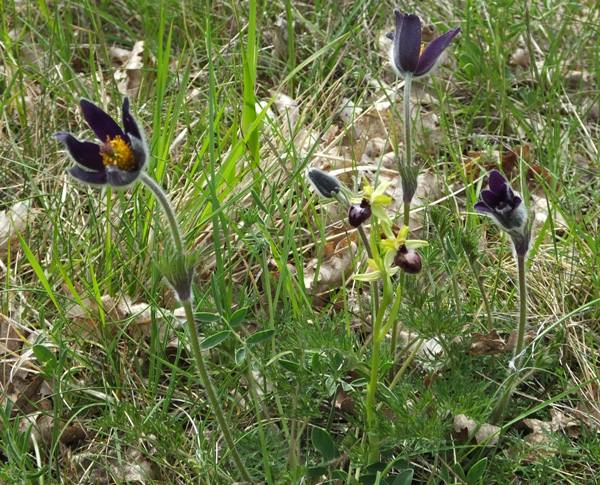
Above: Ophrys sphegodes with Pasqueflowers on a limestone plateau in the Aveyron region of France
Habitat
Ophrys sphegodes grows in open areas of impoverished grassland and in semi-shaded woodland edges. It requires calcareous substrates.
Flowering times
From March through to the end of May, depending on location and exposure.
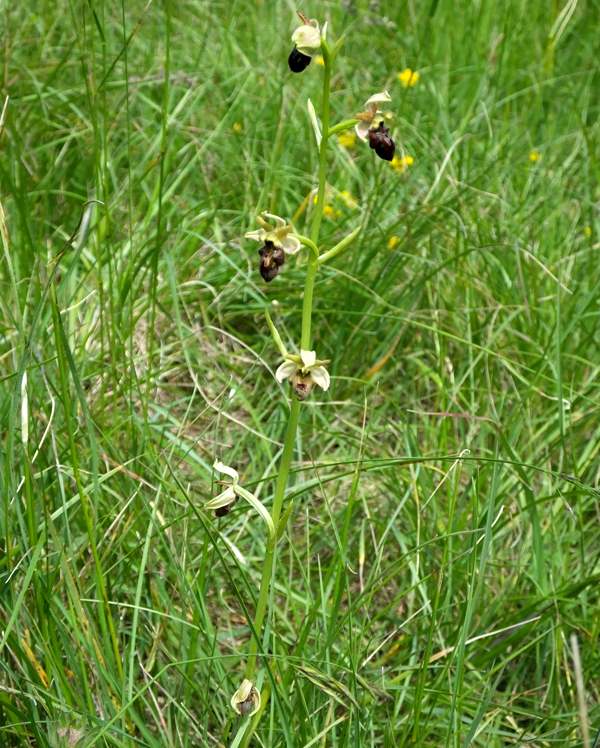
Known as Ophrys sphegodes var. aranifera in France, the plants seen immediately above and below are growing in long, lush grass in wet meadows in the Lot Valley, where they flower during May.
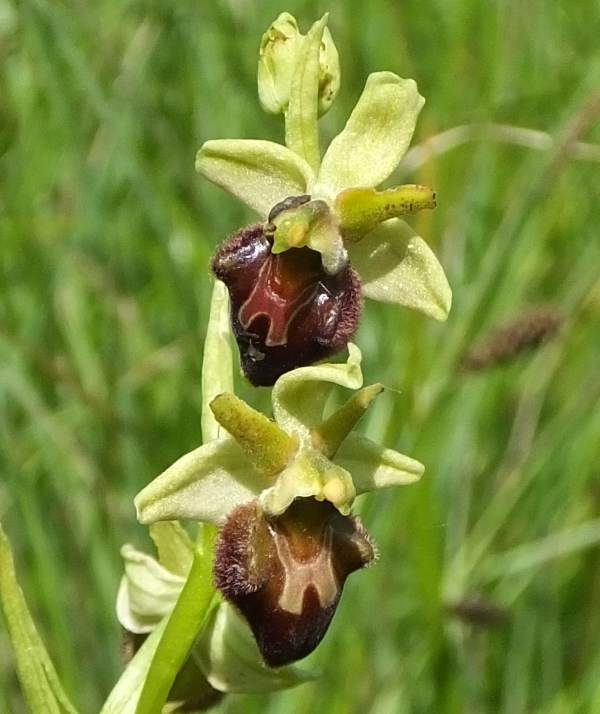
The specimens shown on this page were photographed in Dorset in April, in the Aveyron and Lot Valley regions of southern France in mid May, and on the Gargano Peninsula in southern Italy in early May.
Subspecies on this website
In Europe numerous subspecies are described: O. sphegodes subsp. areneola, O. sphegodes subsp.aveyronensis, O.sphegodes subsp. cretensis, O. sphegodes subsp. gortynia, O. sphegodes subsp. mammosa, and Ophrys sphegodes subsp. spruneri
UK hybrids
Two hybrids are known to occur in the UK: Ophrys x hybrida is a hybrid with the Fly Orchid Ophrys insectifera, recorded from Kent; and
Ophrys x obscura is a hybrid with the Late Spider-orchid Ophrys fuciflora, also recorded from Kent.
Etymology
The genus name Ophrys comes from Greek and means 'eyebrow' - a reference to the hairy fringe of the lip of the flower of many orchids in this genus. The specific epithet sphegodes comes from ancient Greek seems to suggest a wasp-like appearance of the flowers of this orchid.
Reference sources
The Plant List
Henrik AErenlund Pedersen & Niels Faurholdt (2007) Ophrys - The Bee Orchids of Europe; Kew
Anne and Simon Harrap (2005) Orchids of Britain and Ireland; A&C Black
Pierre Delforge (2005) Orchids of Europe, North Africa and the Middle East; A&C Black
Fielding, Turland and Mathew (2005) Flowers of Crete; Kew
Sue Parker's latest ebook is a revised and enlarged edition of Wild Orchids in The Burren. Full details here...
Buy it for just £5.95 on Amazon...
Sue Parker's new ebook is a comprehensive and fully revised edition of her acclaimed field guide to the Wild Orchids of Wales. Full details here...
Buy it for just £5.95 on Amazon...
Sue Parker's 5-star acclaimed field guide to the Wild Orchids of the Algarve is now available as an ebook. Full details here...
Buy it for just £5.95 on Amazon...
Please Help Us: If you have found this information interesting and useful, please consider helping to keep First Nature online by making a small donation towards the web hosting and internet costs.
Any donations over and above the essential running costs will help support the conservation work of Plantlife, the Rivers Trust and charitable botanic gardens - as do author royalties and publisher proceeds from books by Pat and Sue.